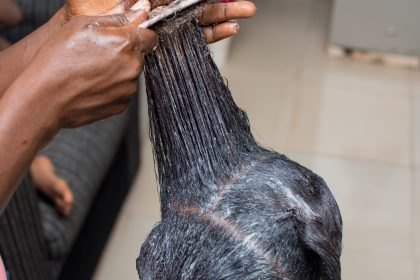New data reveals urgent need for increased awareness and early detection

Understanding male breast cancer fundamentals
Male breast cancer is a rare but increasingly significant health concern. With approximately 2,800 new diagnoses expected this year in the United States, the condition continues to be a largely under-recognized issue in men’s health. While breast cancer is most commonly associated with women, research shows that men can also develop the disease, and the rates of diagnosis have been gradually rising. The majority of these cases occur in men between the ages of 60 and 70, though it can affect individuals outside of this age group as well. It’s important to recognize that although male breast cancer is less common, its presence highlights the need for awareness and proactive health management.
Recognizing critical symptoms
As with any form of cancer, early detection is key to improving the chances of successful treatment. For male breast cancer, it is essential to remain vigilant about any changes in breast tissue. Men may experience symptoms similar to those observed in women, but many are unaware that these signs could indicate breast cancer. Understanding these critical symptoms can make a crucial difference:
Distinctive lumps beneath the nipple or areola
The presence of a lump or mass in the breast tissue is one of the most common early signs. These lumps may be painless initially, but it is important to seek medical attention if they are discovered, especially if they persist over time.
Changes in breast tissue texture or appearance
Swelling, redness, or dimpling of the skin around the breast area can be indicative of an underlying problem. The skin may appear puckered or tightened, which is often a result of the tumor affecting the breast tissue.
Unusual nipple discharge or changes
Discharge from the nipple, particularly if it’s bloody or clear, should never be ignored. This can be a sign of cancer or other conditions affecting the breast. Additionally, any noticeable change in the shape or size of the nipple should be assessed by a healthcare provider.
Skin alterations in the breast area
Changes in the texture or color of the skin surrounding the breast, such as redness or a rash, may signal an issue. Skin alterations may result from the underlying tumor affecting the skin’s surface or blood flow.
Identifying risk factors
Male breast cancer remains relatively rare, but there are several risk factors that increase the likelihood of developing the disease. Understanding these risk factors is crucial for individuals to take proactive steps toward managing their health. Genetics and family history play an essential role in predicting risk, and certain medical conditions may also contribute to higher susceptibility.
Genetic predisposition
A significant number of male breast cancer cases are linked to genetic mutations, particularly in the BRCA1 and BRCA2 genes. These mutations, inherited from a parent, can drastically increase the likelihood of developing both breast cancer and other types of cancer. Men who carry these mutations are at a higher risk and should discuss genetic testing options with their healthcare provider.
Family history
A family history of breast cancer, especially in close relatives like mothers or sisters, can indicate an increased risk. While the condition is rarer in men, those with a family history of breast cancer should be more vigilant about regular screenings and consultations with their doctors.
Hormonal imbalances
Hormonal factors also contribute to the development of male breast cancer. Men with higher levels of estrogen or lower levels of testosterone may be at a greater risk of developing breast cancer. Conditions such as obesity, liver disease, or the use of certain medications can lead to hormonal imbalances.
Age and other factors
Age is another significant risk factor. Men over the age of 60 are more likely to be diagnosed with male breast cancer. Additionally, exposure to radiation, certain environmental toxins, and conditions like Klinefelter syndrome, which affects the testicles, can also increase susceptibility.
Screening and diagnostic approaches
Screening and early detection remain central to improving outcomes for individuals diagnosed with male breast cancer. However, due to the rarity of the disease, there is no specific, widely accepted screening program for men. Nevertheless, regular physical exams and attention to any noticeable changes in the breast area are vital.
Physical examinations
A thorough physical examination by a healthcare provider is essential. During this exam, the physician will check for lumps, changes in skin texture, or other abnormalities that could indicate cancer. For men, this includes an evaluation of the chest, underarms, and the area around the nipple.
Imaging technologies
Advanced imaging techniques such as mammography and ultrasound are commonly used to identify breast tissue abnormalities. While mammograms are primarily designed for women, they can also be effective in detecting male breast cancer, particularly in cases where a lump or mass is present.
Biopsy procedures
If abnormalities are detected through imaging or physical exams, a biopsy may be performed to confirm the diagnosis. During a biopsy, a small sample of tissue from the lump is taken and analyzed under a microscope to determine whether it is cancerous.
Treatment strategies and options
Treatment for male breast cancer largely mirrors the approaches used for female breast cancer, although the specific plans depend on the size, stage, and location of the tumor, as well as the individual’s overall health.
Surgical interventions
The primary treatment for male breast cancer is often surgery. A common procedure is a mastectomy, where the entire breast is removed. In some cases, a lumpectomy, where only the tumor and a small margin of surrounding tissue are removed, may be performed if the tumor is localized and small.
Chemotherapy and radiation therapy
Following surgery, chemotherapy or radiation therapy may be recommended to target any remaining cancer cells. Chemotherapy uses drugs to kill cancer cells throughout the body, while radiation focuses on specific areas to destroy localized cells. These treatments are tailored based on the type of breast cancer and its stage.
Hormonal therapies
In some cases, male breast cancer is hormone-receptor-positive, meaning it relies on estrogen to grow. Hormonal therapies such as tamoxifen or aromatase inhibitors may be used to block estrogen’s effects and reduce the risk of recurrence.
Targeted therapies
In addition to hormonal treatments, targeted therapies may be utilized, especially if genetic testing reveals specific mutations. These treatments work by targeting the molecules that allow cancer cells to grow and multiply, offering a more precise approach with potentially fewer side effects.
Looking ahead
As awareness of male breast cancer increases, so does the potential for earlier detection and more effective treatments. Continued research into the genetics and hormonal factors that contribute to male breast cancer will pave the way for more personalized and tailored treatments in the future.















